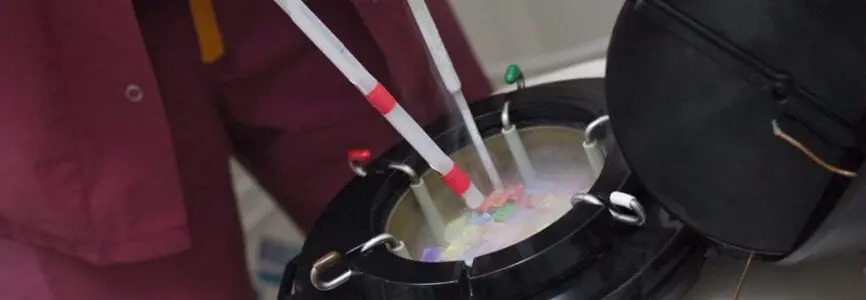Bioethics Forum Essay
Questions About Using “Mosaic” Embryos in IVF
Couples undergoing IVF routinely undergo preimplantation genetic screening, or PGS, to make sure that their embryos are viable and free of genetic disease. However, some embryos have both normal and abnormal cells, and at least some of these “mosaic” embryos are capable of developing into healthy children, as described in a New York Times article. This raises a troubling question: should mosaic embryos be used to create a pregnancy? Fertility specialists are divided on the issue.
In part, the disagreement rests on factual questions regarding the reliability of PGS screening. Dr. Norbert Gleicher questions “whether a biopsy that examines five to ten random cells from the outer shell of a 200-cell embryo can reliably represent the inner cell mass, the crucial core from which the fetus develops.” He reports three normal births after the transfer of mosaic embryos. But Dr. Mark Sauer responds that such a small sample of healthy babies does not warrant a change in the standard practice not to implant mosaic embryos, especially since problems may show up later in childhood or adulthood.
If the only risk is that the embryo won’t implant, and the woman will miscarry, it seems reasonable to allow infertility patients to decide whether to take that risk. But what if there is a serious risk that the child will have developmental defects? Is that a risk that prospective parents should be able to take? Should physicians accede to such a request?
The question is complicated by the fact that, quite apart from the factual issues about the reliability of PGS, there’s another deeper, conceptual question: May prospective parents take risks with the health of their future child if there is no other way that the child can be born? As one couple put it in the New York Times article, “Had we not used that embryo, it either would have been discarded or donated to science. The boy we have now wouldn’t have been.” In this case, the boy turned out to be a happy, healthy child, but what if he had been born with a serious disability? Could they justify their decision to use a mosaic embryo?
Law professor John Robertson, a prominent defender of procreative liberty, is opposed to most restrictions on reproductive technologies or arrangements. He argues that it is illogical to attempt to protect children by preventing them from being born as long as their lives can reasonably be expected to be worth living. Moreover, most people with disabilities, even serious ones, do have lives worth living. This suggests that the prospective parents should be able to make the decision to use a mosaic embryo, since even if the child has a significant disability, he or she will have a life worth living. In addition, preventing them from using the embryo restricts their procreative liberty, preventing them from having a genetically related child.
In my view, this places too much weight on procreative liberty and too little on procreative responsibility. Procreative responsibility means thinking about the kind of life one’s child is likely to have. Reasonable people can disagree about the bounds of procreative responsibility, but what they may not do is say that it doesn’t matter what the child’s life will be like, if he or she has no other way of getting born. After all, no child suffers or is made miserable by not being born.
Admittedly, the couple will suffer if they cannot have a child. However, they do have other alternatives. They could undergo another round of IVF, if that might result in normal embryos. Or they could forego having a genetically related child and use gamete donation. Adoption is another way for people to build families. I do not discount the cost to them of these alternatives, and support policies that minimize the costs (such as having IVF covered by insurance), but people may be required to accept some burdens to avoid having children who will be significantly disadvantaged.
If PGS is reliable, the practice not to transfer mosaic embryos is a reasonable one. But do we really know that PGS is reliable for mosaic embryos? Many fertility doctors report that when they choose between embryos for implantation, they do it impressionistically. They pick embryos that “look healthy” or “look normal.” More research is needed to improve techniques for determining embryo viability and avoiding defects in born children. This is thwarted by the policy in the U.S. that forbids federal funding for research that uses embryos. Ending that policy would be beneficial for many couples struggling with infertility, not simply the ones who have only one mosaic embryo.
Procreative responsibility requires prospective parents, and the doctors who help them become pregnant, to think seriously about the welfare of their future children. They should avoid bringing into the world children who will have significant medical problems, if they can become parents by having other children who will not have such problems.
Bonnie Steinbock, a Hastings Center Fellow, is a professor of bioethics at Clarkson University and Icahn School of Medicine at Mount Sinai.













